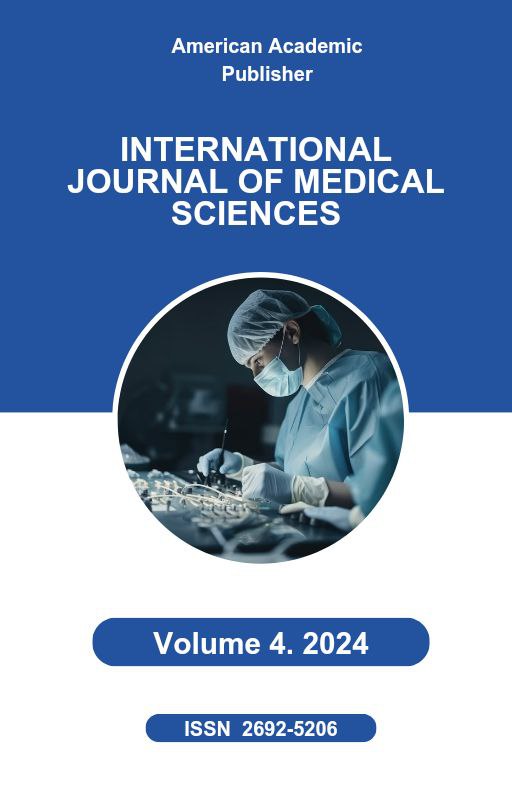 Articles
| Open Access |
https://doi.org/10.55640/
Articles
| Open Access |
https://doi.org/10.55640/
COMPARATIVE ANALYSIS OF MEDICAL LITERACY LEVELS AND CERVICAL CANCER RISK FACTORS AMONG WOMEN IN THE REPUBLIC OF KARAKALPAKSTAN
Talgatova Aigerim Talgatovna , Republican Specialized Scientific and Practical Medical Center of Pediatrics Tashkent, UzbekistanAbstract
Objective: To conduct a comparative analysis of the level of medical literacy regarding cervical cancer (CC) and to identify the prevalence of its main risk factors among women living in different districts of the Republic of Karakalpakstan. Methods: A cross-sectional anonymous survey was conducted among 1,500 women aged 25-49. A specially designed questionnaire was used to assess awareness of CC, human papillomavirus (HPV), screening methods (Pap test, HPV test), HPV vaccination, and key risk factors (smoking, early sexual debut, number of partners). Statistical analysis was performed to compare data between urban (Nukus city) and rural populations. Results: The study revealed a generally low level of medical literacy on CC issues. Only 35% of respondents were aware of the link between HPV and CC. Women in rural areas demonstrated significantly lower awareness compared to urban residents (p < 0.001). A high prevalence of risk factors was identified: 28% of respondents were smokers, and 45% reported an early sexual debut (before age 18). A significant negative correlation was found between the level of medical literacy and the presence of behavioral risk factors. Conclusion: There is a critical need to increase medical literacy about cervical cancer and its prevention among women in Karakalpaikstan, with a particular focus on rural areas. The findings justify the need for targeted educational programs and the development of accessible screening services to reduce the incidence and mortality of cervical cancer in the region.
Keywords
cervical cancer, HPV, medical literacy, health awareness, risk factors, screening, Pap test, Karakalpakstan, women's health.
References
Angle, E. H. (1899). Classification of malocclusion. The Dental Cosmos, 41(3), 248–264.
Crighton, E. J., Elliott, S. J., van der Meer, J., & Small, I. (2011). The Aral Sea disaster and self-rated health. Health & Place, 17(2), 670–676. https://doi.org/10.1016/j.healthplace.2011.01.011
Graber, T. M., Vanarsdall, R. L., & Vig, K. W. L. (Eds.). (2016). Orthodontics: Current principles and techniques (6th ed.). Elsevier.
Landrigan, P. J., Fuller, R., Acosta, N. J., & et al. (2017). The Lancet Commission on pollution and health. The Lancet, 391(10119), 462–512. https://www.google.com/search?q=https://doi.org/10.1016/S0140-6736(17)32345-0
Linder-Aronson, S. (1979). Naso-respiratory function and craniofacial growth. In J. A. McNamara Jr. (Ed.), Naso-respiratory function and craniofacial growth (pp. 121-147). Center for Human Growth and Development, The University of Michigan.
Little, R. M. (1975). The irregularity index: A quantitative score of mandibular anterior alignment. American Journal of Orthodontics, 68(5), 554–563. https://doi.org/10.1016/0002-9416(75)90086-x
Micklin, P. P. (2016). The future of the Aral Sea. Environmental Earth Sciences, 75(9), 844. https://www.google.com/search?q=https://doi.org/10.1007/s12665-016-5595-5
Moyers, R. E. (1988). Handbook of orthodontics (4th ed.). Year Book Medical Publishers.
O'Brien, K., Wright, J., Conboy, F., & Sanjie, Y. (2003). The effect of orthodontic treatment on self-esteem. American Journal of Orthodontics and Dentofacial Orthopedics, 124(5), 554-560.
Proffit, W. R., Fields, H. W., & Sarver, D. M. (2018). Contemporary orthodontics (6th ed.). Elsevier.
Rylander, R., & Vesterlund, J. (1982). Airborne bacteria in an animal house with climate control. Journal of Agricultural Engineering Research, 27(4), 355-359.
Small, I., van der Meer, J., & Upshur, R. E. (2001). Acting on the upstream social and economic determinants of health: A Canadian perspective. The Milbank Quarterly, 79(3), 311–315.
Warren, J. J., & Bishara, S. E. (2002). Duration of nutritive and nonnutritive sucking behaviors and their effects on the dental arches in the primary dentition. American Journal of Orthodontics and Dentofacial Orthopedics, 121(4), 347-356.
Whiteman, C. J., & Fowle, T. L. (2007). The impact of childhood asthma on oral health-related quality of life. Journal of Clinical Pediatric Dentistry, 31(4), 232-237.
World Health Organization. (2018). The public health impact of chemicals: knowns and unknowns. WHO Press.
Zholdasova, R. S., & Bekturganov, Z. S. (2019). Ecological problems of the Aral Sea region and their influence on the health of the population. Bulletin of the Karaganda University, 94(2), 56-62.
Article Statistics
Downloads
Copyright License

This work is licensed under a Creative Commons Attribution 4.0 International License.

